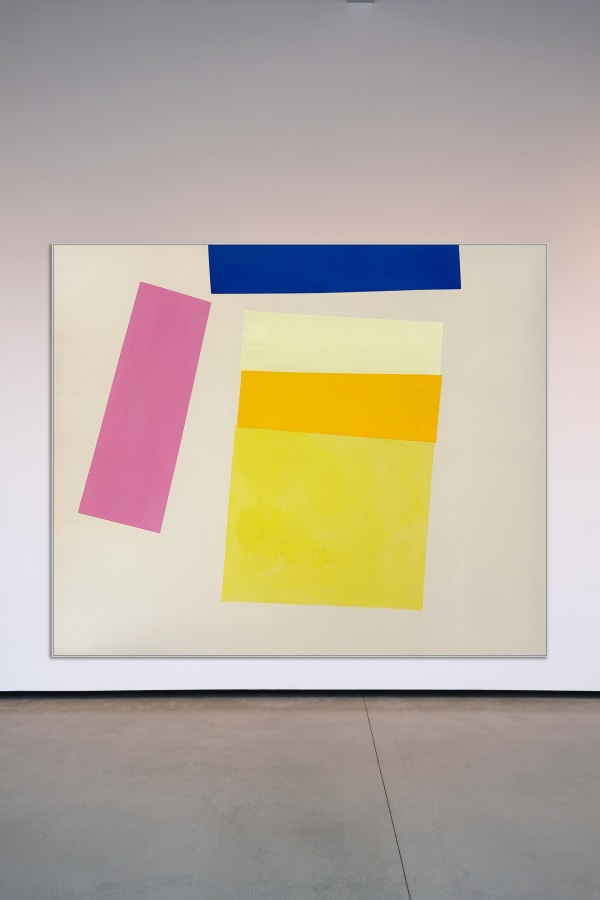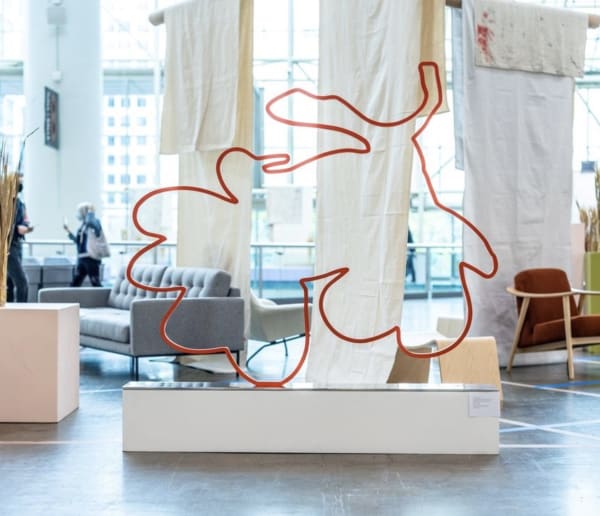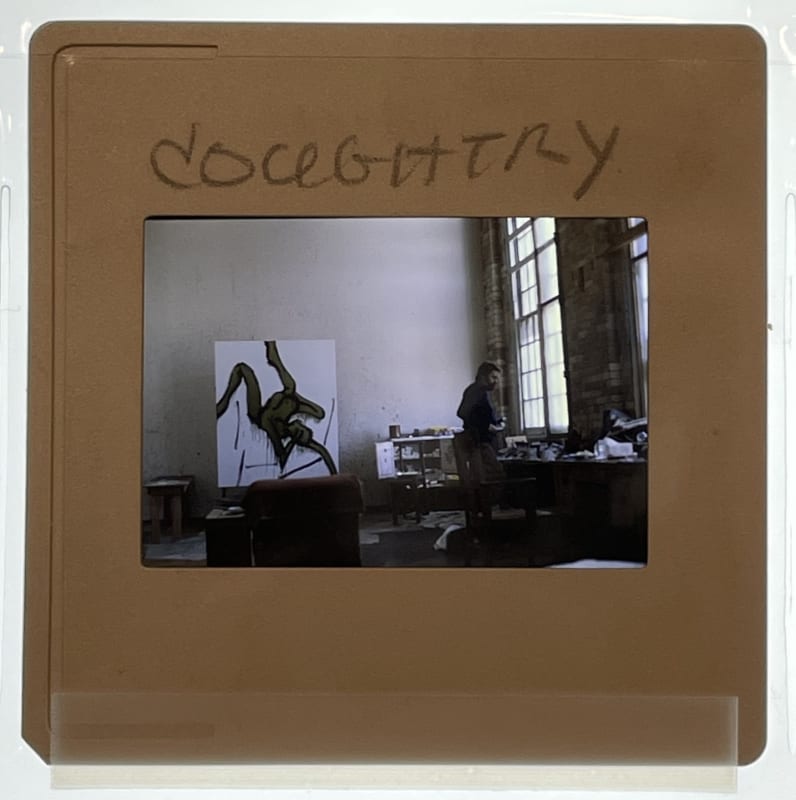John Graham Coughtry Canadian, 1931-1999
John Graham Coughtry graduated from the Ontario College of Art in 1953 and immediately left Toronto for Europe on a year-long Eaton Travelling Scholarship. His early paintings showed the influence of French and Spanish artists including Pierre Bonnard and Alberto Giacometti, whose jewel-like colours and ghostly, silhouetted forms inspired Coughtry during his studies abroad. Art critic Robert Fulford described “[Coughtry’s] earlier pictures, glowing first with a brilliant summer light and then with a brooding deep-blue warmth” like the fiery Late Afternoon Interior from 1957 and the cooler Moonlit Interior from the following year. In these paintings Coughtry “worked towards a fusion of light and object: those chairs and tables were at once objects and the light which plays on objects” (Fulford, 1961).
Coughtry’s first show was a joint exhibition with Michael Snow at the University of Toronto’s Hart House in 1955. Infamously, then-Mayor Nathan Phillips, “reporters in tow, swept through demanding that the paintings be suppressed on grounds of obscenity” (Fulford, 1961). A year later, Coughtry had his first solo show at the Greenwich Art Gallery in Toronto. Gallery owner Avrom Isaacs had once shared an apartment with Coughtry, and the two remained close friends and colleagues — in a 1969 letter to the artist, Isaacs wrote that “I still consider myself your friend as well as your dealer, so let me know what's happening - you jerk!”
The solo exhibition “Graham Coughtry: Paintings and Drawings” opened at the Greenwich Gallery in the winter of 1959. It included six portraits, the painting Moonlit Interior, and a number of Coughtry’s other paintings, drawings, and sculptures. In a 1961 article in Canadian Art, Fulford wrote that "these were not portraits in any usual sense - that is, they did not describe individual faces - but rather the impressions of the idea of the portrait: the idea of confrontation between painter and subject. [T]he surfaces were lush, varied and altogether admirable" (Fulford, 1961). In Portrait No. 6, a dark red form highlighted with purple and yellow brushstrokes emerges from a cascading red and orange ground. In Portrait No. 5, the thick black paint seems to open up to reveal thin layers of blue, purple, and grey in the shape of a head and shoulders. One article described Coughtry’s works during this time as “thick [and] sensuous.” Another details his technique of applying “a thin coat of transparent color over thick white underpainting to create a glazed jewel-like surface.” Invoices from art supply stores show that he used pigments like cobalt violet, cerulean, cadmium orange, siena, ivory black, viridian, and chrome lemon in his work. One postcard from Isaacs to Coughtry reads: “Those colours! You must be out of your mind!”
Evidently, the paintings from the Greenwich Gallery show sold quickly. Less than a month after the exhibition opened, the National Gallery of Canada selected three portraits along with Moonlit Interior and several other works for the 1959 Bienal de São Paulo in Brazil. Moonlit Interior was already owned by a private collector (it was purchased at the 1958 Carnegie International in Pittsburgh) and Joseph H. Hirschhorn purchased five portraits to add to the Coughtry Late Afternoon Interior already in his collection (these works were later gifted to the Hirschhorn Museum in 1966). Another portrait was acquired by the Vancouver Art Gallery. Letters from the late 1950s and 1960s indicate that Coughtry was in high demand, to the point where Isaacs replied to one Los Angeles Gallerist that there “seems to be a problem of the demand far exceeding the supply.” An article in Hirschhorn’s personal papers noted that Coughtry’s annual output was often in the low single digits.
Coughtry enjoyed a successful career throughout the 1960s, showing at the Albright-Knox, Buffalo; the Walker Art Center, Minneapolis; the Art Gallery of Ontario, Toronto; the Guggenheim, New York; the Venice Biennale; the Tate Galleries, London; the Detroit Institute of Arts, Detroit; the Museum of Fine Arts, Montréal; and the Museum of Modern Art, New York; among others. In a 1961 letter to Coughtry’s Toronto Gallery, MoMA Director Alfred H. Barr wrote: “I… think Coughtry is an extraordinarily good painter and have had in mind to try to get a good painting by him ever since I saw the group of his things at the Venice Biennale last year.”
-

Art Toronto 2023
Jack Bush, William Perehudoff, John Graham Coughtry 26 - 29 Oct 2023Rukaj Gallery is pleased to be returning to Art Toronto. Presenting a survey of Canadian Abstraction between 1959 and 1970 the exhibition features seminal works...Read more -

Art Toronto 2021
Friedel Dzubas, Raymond Parker, William Perehudoff 29 Oct - 5 Nov 2021Read more
-

Art Toronto 2023
Jack Bush, William Perehudoff, John Graham Coughtry 26 - 29 Oct 2023Rukaj Gallery is pleased to be returning to Art Toronto. Presenting a survey of Canadian Abstraction between 1959 and 1970 the exhibition features seminal works...Read more -

Art Toronto 2021
Friedel Dzubas, Raymond Parker, William Perehudoff 29 Oct - 5 Nov 2021Read more







